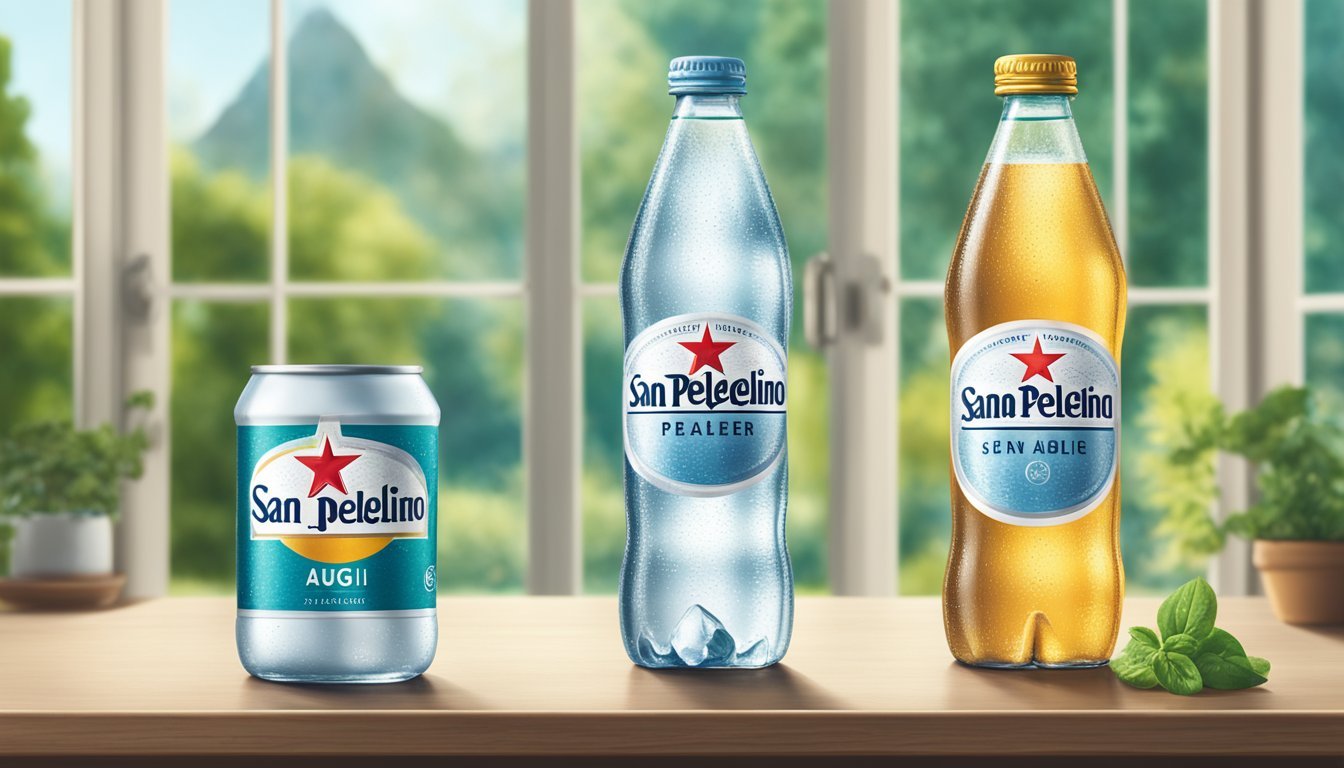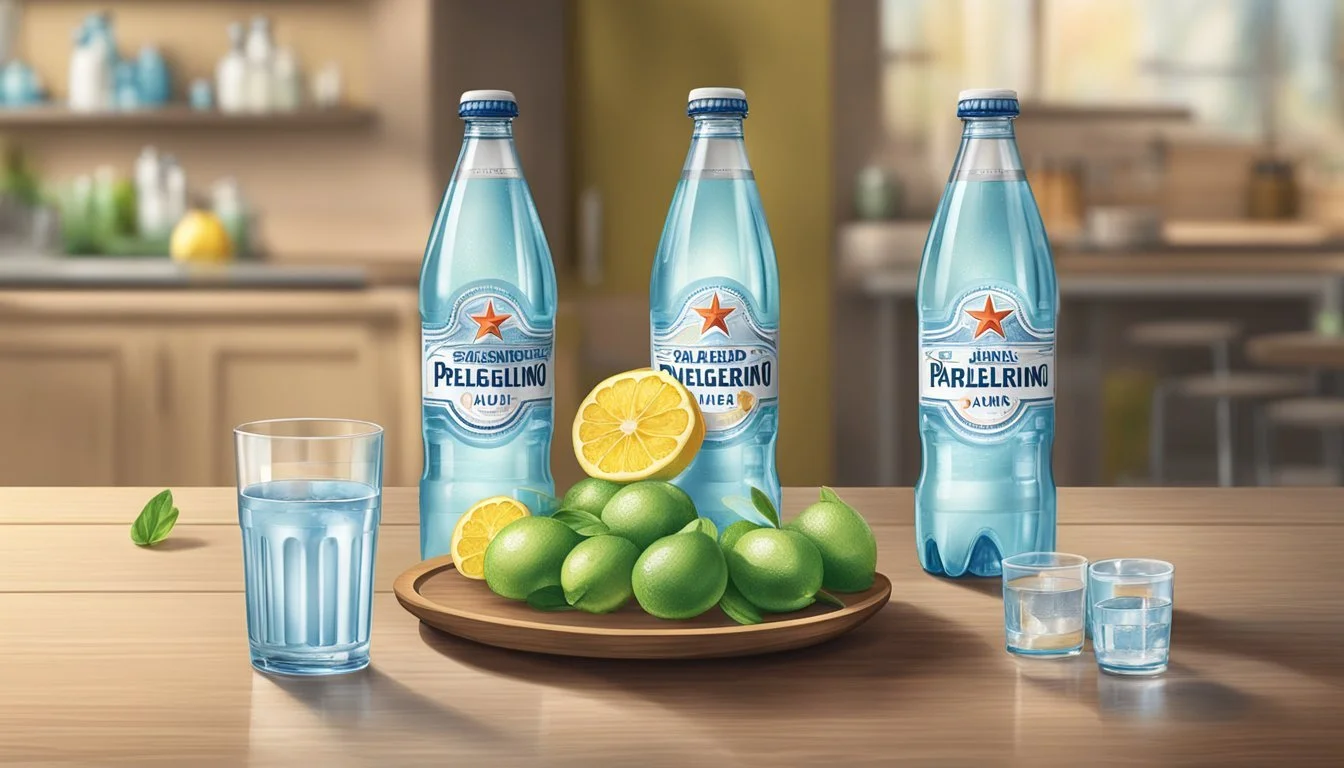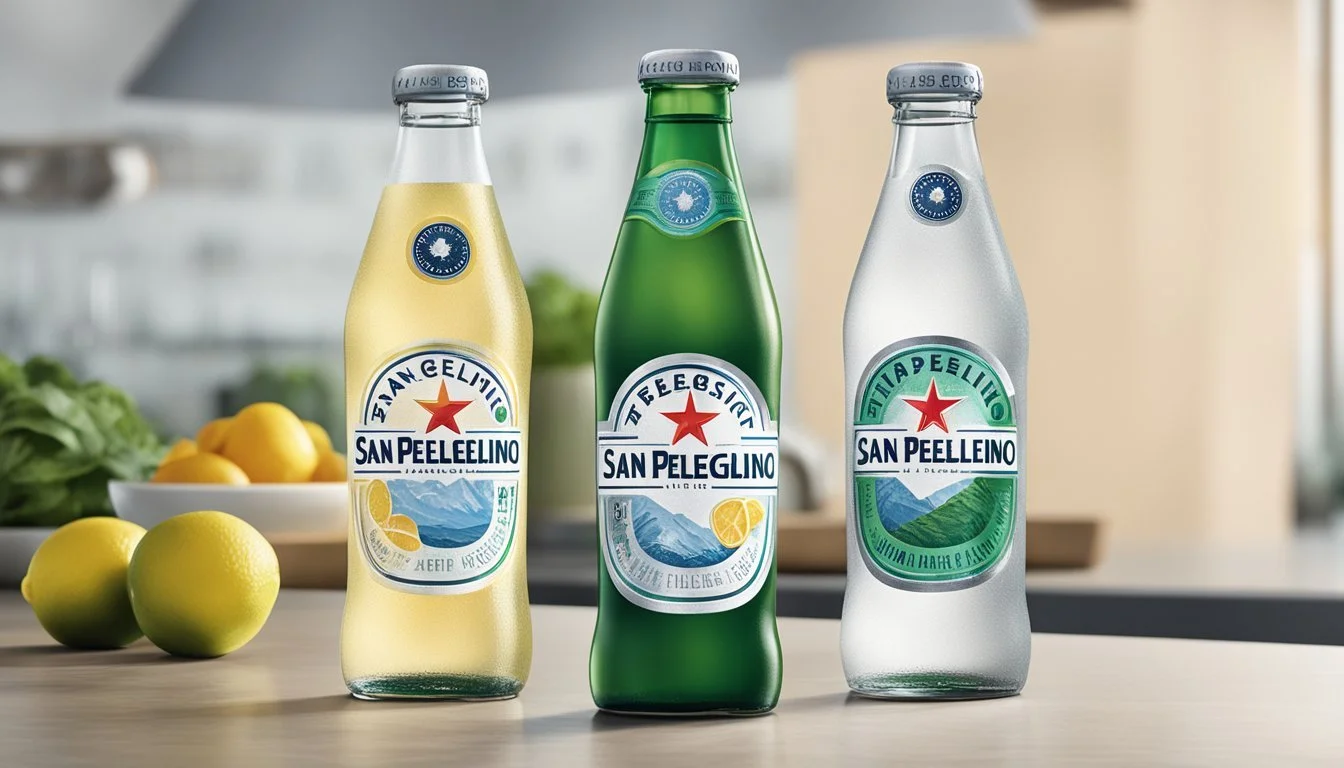San Pellegrino vs. Augi
A Detailed Bottled Water Comparison
When it comes to premium bottled water, two names often come up in the conversation: San Pellegrino and Acqui. For those who prefer sparkling water with a crisp, refreshing fizz, San Pellegrino stands out with its slightly higher carbonation compared to other brands. Its mineral-rich profile, drawn from the Italian Alps, offers a distinct taste that has made it a staple in fine dining and high-end events.
Acqui, on the other hand, offers a still water experience that aims to deliver purity and smoothness. Sourced from protected natural springs, it has a clean taste that appeals to those seeking a subtle, non-carbonated hydration option. The brand's focus on sustainability and natural filtration processes also adds to its appeal among eco-conscious consumers.
Choosing between San Pellegrino and Acqui ultimately depends on personal preferences and dietary needs. Whether you are looking for the effervescent touch of San Pellegrino or the serene purity of Acqui, understanding what each brand offers can help you make an informed choice tailored to your taste and lifestyle.
Understanding the Essentials of Bottled Water
Different types of bottled water cater to various preferences and hydration needs. Spring water, mineral water, and sparkling water offer distinct characteristics defined by their sources and composition.
The Basis of Bottled Water
Bottled water can be categorized based on its source and treatment. Natural spring water originates from underground sources and is collected at the spring or via boreholes.
Mineral water comes from protected underground reservoirs and contains a specific mineral content, like calcium or magnesium. No minerals can be added to mineral water; its composition must remain as it naturally occurs. Both types of water are usually bottled at the source.
Spring Water Vs. Mineral Water
Spring water and mineral water share some similarities but also have key differences. Spring water is derived from natural springs, meticulously filtered to remove impurities while retaining essential minerals. It offers a refreshing taste due to its natural filtration process.
On the other hand, mineral water contains naturally occurring minerals that must be present in stable amounts. These waters are often praised for their health benefits because the minerals can support bodily functions. Spring water might be more suitable for those seeking a pure, clean-tasting option, whereas mineral water could be ideal for those looking for added nutritional value.
Sparkling Water and Carbonation
Sparkling water undergoes carbonation, which involves adding carbon dioxide to create effervescence and bubbles. This process can be natural or artificial. Natural carbonation occurs when mineral or spring water is sourced from naturally carbonated springs.
Artificial carbonation involves injecting carbon dioxide into still water to produce a fizzy sensation. This carbonation gives sparkling water its characteristic texture and can enhance the drinking experience, making it a popular choice for those who enjoy the refreshing feel of bubbles. Sparkling water can also be a healthier alternative to sugary soft drinks while providing similar sensory satisfaction.
Profiling San Pellegrino and Aqui
San Pellegrino and Aqui boast distinct heritage, unique mineral content, and significant market presence.
Origin and Source
San Pellegrino originates from the San Pellegrino Terme area in the Italian Alps. The water is naturally filtered through layers of dolomitic rock, enriching it with essential minerals. This region, known for its pristine environment, contributes to the purity and unique taste profile of San Pellegrino.
Aqui sources its water from the Dolomites, another renowned Alpine range in Italy. The source is known for its crystal-clear springs and natural filtration process. The alpine environment provides Aqui with a similarly clean and mineral-rich composition.
Mineral Content Analysis
San Pellegrino contains a variety of naturally occurring minerals like calcium, magnesium, and bicarbonate. Its mineral composition makes it slightly effervescent, giving it a refreshing, crisp taste.
Mineral Content (mg/L) Calcium (Ca) 208 Magnesium (Mg) 56 Bicarbonates 243
Aqui has a balanced mineral profile, emphasizing sodium, magnesium, and sulfate. These minerals enhance its smooth texture and subtle flavors.
Mineral Content (mg/L) Sodium (Na) 8 Magnesium (Mg) 20 Sulfate (SO4) 5
Brand Heritage and Market Presence
San Pellegrino has a storied history dating back to 1899. It is a hallmark of fine dining and is often associated with luxury and gastronomy. Its branding emphasizes quality and tradition, making it a preferred choice in high-end restaurants worldwide.
Aqui is a newer entrant in the bottled water market but has quickly gained a reputation for quality. Its branding focuses on purity and health, appealing to consumers seeking a premium, health-conscious water option. Aqui's growth in market presence is notable, particularly in the health and wellness sectors.
The combined legacy and mineral compositions of these brands highlight their unique positions in the bottled water industry.
Health, Taste, and Dietary Considerations
San Pellegrino and Augi offer distinct characteristics in terms of their health benefits, taste, and dietary impact of their mineral content. Understanding these differences will help consumers make informed choices.
Nutritional Profile and Health Benefits
San Pellegrino is known for its rich mineral content, including sodium, magnesium (over 52 mg/L), and sulfates, which can support digestive health. It is a sparkling water, which may appeal to those who prefer the crisp, effervescent experience.
Augi, on the other hand, positions itself as a nutritious, still mineral water with a blend of essential minerals. It typically contains calcium, potassium, and bicarbonate which can aid in maintaining bone health, electrolyte balance, and proper hydration.
Both waters offer unique health benefits, but the choice between them might depend on specific health needs and personal preferences for either sparkling or still water.
Taste: Perception and Reality
San Pellegrino provides a distinct, crisp taste due to its carbonation. The effervescence combined with its mineral profile creates a refreshing sensation that many consumers enjoy. The addition of CO2 helps preserve the natural minerals, enhancing the flavor profile.
Augi, being still water, offers a smoother and more neutral taste. This makes it suitable for those who prefer less intense flavors and a more subtle drinking experience. The lack of carbonation allows the natural minerality of the water to be more perceptible without the distraction of bubbles.
Taste is subjective, and personal preferences will greatly influence one's choice between the crisp, effervescent San Pellegrino and the smooth, neutral Augi.
Dietary Impact of Minerals
The minerals in San Pellegrino include significant amounts of sodium, calcium, magnesium, and sulfates. This can be beneficial for people needing these nutrients but may necessitate caution for those on a low-sodium diet.
Augi's mineral content, which includes calcium, potassium, and bicarbonate, supports overall hydration and can promote bone health and electrolyte balance. The lower sodium content compared to San Pellegrino makes it a preferable choice for individuals with sodium restrictions.
Differences in mineral content between these two bottled waters have a considerable impact on dietary choices, catering to various health needs and dietary preferences.
The Culinary World's Take on Water Pairing
Pairing water with food has become a sophisticated practice in the culinary world. The right water can elevate the dining experience, balancing flavors and serving as an effective palate cleanser.
Water Sommelier: The Art of Water Pairing
Water sommeliers are experts in selecting waters that complement various dishes. They are trained to understand the mineral composition and taste profiles of different bottled waters.
For example, San Pellegrino is often chosen for its crisp, slightly bitter notes due to its high mineral content, making it ideal with robust, savory dishes. On the other hand, Augi might be selected for its softer, more neutral flavor to enhance lighter dishes such as delicate fish or salads.
Their role is akin to that of wine sommeliers, emphasizing the balance between food and water. This practice has gained traction among fine dining establishments, where the quality and type of water are considered essential aspects of the overall dining experience.
Water in Fine Dining and Gourmet Cuisine
In gourmet dining, the choice of water serves more than just a hydration purpose—it contributes to the meal's quality. Sparkling and still waters can affect the palate in different ways.
Sparkling water like San Pellegrino is often preferred for its ability to cleanse the palate between courses. The carbonation helps to reset taste buds, preparing them for the next dish.
Still water, such as Augi, is frequently used when the goal is to avoid interfering with the subtle flavors of a dish. Its neutrality makes it an excellent companion for tasting menus and intricate, flavor-sensitive cuisines.
In restaurants, presenting a curated water list can enhance the dining experience, providing an elevated and thoughtful touch to the meal. Whether sparkling or still, the right water pairing acts as a subtle yet significant contributor to gourmet dining.
Environmental and Sustainability Aspects
San Pellegrino and Augi both emphasize environmentally conscious practices. This section explores their bottling processes and sustainability practices, highlighting their respective impacts on the environment.
Bottling Process and Environmental Impact
San Pellegrino primarily uses glass bottles, which are known for their recyclability and lower environmental footprint compared to plastic. The production and transportation of glass, however, can contribute to a higher carbon footprint due to the weight of the bottles.
Augi also focuses on using recyclable glass bottles. Their bottling process is geared towards minimizing waste and energy consumption. Both brands strive to reduce their carbon footprint through efficient logistics and reduced emissions.
Sustainability Practices of Brands
San Pellegrino has implemented several sustainability practices. They focus on water conservation and have initiatives to protect the natural springs they source from. Their commitment to reducing plastic waste is evident in their increased use of glass bottles.
Augi places a strong emphasis on sustainable sourcing. They ensure that their water sources are responsibly managed to prevent depletion. Augi also employs renewable energy in their manufacturing facilities, further reducing their environmental impact.
Comparative Analysis: Pricing and Value
When debating between San Pellegrino and Augi, pricing and perceived value can influence consumer choices significantly. Both brands cater to slightly different audiences, which reflects in their pricing strategies and value propositions.
Comparing Costs: Premium Water Brands
San Pellegrino is often positioned as a premium sparkling water, leading to higher price ranges. The prices for San Pellegrino typically range from $1.50 to $3.00 per liter.
On the other hand, Augi might target a different market segment with more competitive pricing, which may appeal to a broader audience.
For consumers, the choice also depends on ongoing sales and promotions for both brands, often making one temporarily more attractive than the other.
Perceived Value and Consumer Choice
The perceived value of bottled water generally hinges on its source, mineral content, and brand prestige. San Pellegrino, sourced from the Italian Alps, carries a luxurious image and is often seen as a status symbol. This enhances its value perception among consumers who are willing to pay a premium.
Augi, while perhaps less renowned globally, may attract consumers with its promise of purity and potentially unique mineral profile.
Consumer preference plays a critical role as well. For some, the bubbly effervescence of San Pellegrino is unmatched, while others might prefer the taste and qualities presented by Augi. The balance between cost and perceived value is different for each individual.
Consumer Perspectives and Trends
Consumer opinions on bottled water brands like San Pellegrino and Augi are often shaped by preferences for either sparkling or still water, and purchasing habits influenced by accessibility and taste.
Popularity and Trends in Bottled Water
San Pellegrino's sparkling mineral water has built a strong brand presence, often found in both grocery stores and convenience stores. Its reputation is associated with its crisp taste and high carbonation levels, making it a favorite among those who enjoy a bubbly experience. Consumers often choose it over tap water and generic brands due to its premium status.
Augi, a relative newcomer, has carved out a niche in the still water market. It appeals to health-conscious consumers who appreciate its low mineral content and clean taste. Augi is frequently praised for its environmental initiatives, including recyclable packaging. Though less widespread than San Pellegrino, Augi's marketing as a sustainable choice has resonated well.
Consumer Reviews and Preferences
San Pellegrino generally receives high marks for its sparkling quality and elegant bottle design. Many highlight its versatility, enjoying it both as a standalone beverage and in cocktails. The 6-8°C (43-46°F) serving suggestion aligns with consumer reviews, suggesting optimal enjoyment.
Augi's reviews often mention its refreshing nature and suitability for daily hydration. Without the carbonation, it's a preferred choice for those seeking a softer taste. Consumers also note its excellent pairing with meals due to its neutral flavor profile. Accessibility remains a topic; while popular, some consumers find Augi less available in local stores compared to San Pellegrino.
More About San Pellegrino
Acqua Panna vs San Pellegrino: Which Bottled Water is Better?
Boxed Water vs San Pellegrino: Which Bottled Water is Better?
Core Hydration vs San Pellegrino: Which Bottled Water is Better?
Ice Mountain vs San Pellegrino: Which Bottled Water is Better?
Icelandic Glacial vs San Pellegrino: Which Bottled Water is Better?
Just Water vs San Pellegrino: Which Bottled Water is Better?
Mountain Valley Spring Water vs San Pellegrino: Which Bottled Water is Better?
Nestle Pure Life vs San Pellegrino: Which Bottled Water is Better?
Poland Spring vs San Pellegrino: Which Bottled Water is Better?
San Pellegrino vs Alkaline88: Which Bottled Water is Better?
San Pellegrino vs Aqua Carpatica: Which Bottled Water is Better?
San Pellegrino vs Cascade Mountain: Which Bottled Water is Better?
San Pellegrino vs Castle Rock: Which Bottled Water is Better?
San Pellegrino vs CBD Living: Which Bottled Water is Better?
San Pellegrino vs Crystal Geyser: Which Bottled Water is Better?
San Pellegrino vs Crystal Lake: Which Bottled Water is Better?
San Pellegrino vs Essence pH10: Which Bottled Water is Better?
San Pellegrino vs Hawaii Volcanic: Which Bottled Water is Better?
San Pellegrino vs Hawaiian Springs: Which Bottled Water is Better?
San Pellegrino vs Kirkland Signature: Which Bottled Water is Better?
San Pellegrino vs Liquid Death: Which Bottled Water is Better?
San Pellegrino vs Open Water: Which Bottled Water is Better?
San Pellegrino vs Proud Source: Which Bottled Water is Better?
San Pellegrino vs Purely Sedona: Which Bottled Water is Better?
San Pellegrino vs Richard's Rainwater: Which Bottled Water is Better?
San Pellegrino vs Simple Truth: Which Bottled Water is Better?
San Pellegrino vs Smartwater: Which Bottled Water is Better?
San Pellegrino vs Solan de Cabras: Which Bottled Water is Better?
San Pellegrino vs Talking Rain AQA: Which Bottled Water is Better?
San Pellegrino vs Topo Chico: Which Bottled Water is Better?
San Pellegrino vs Weird Water: Which Bottled Water is Better?
San Pellegrino vs Whole Foods 365: Which Bottled Water is Better?
San Pellegrino vs Whole Foods Italian Still Mineral water: Which Bottled Water is Better?
San Pellegrino vs Zephyrhills: Which Bottled Water is Better?







